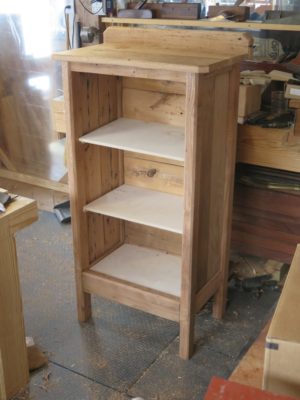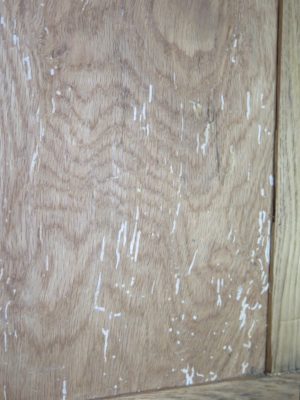Huh, Never Had This Problem Before

Last winter I started to finish the doors for Mrs. Barn’s clothes cabinet I built many moons ago using recycled chestnut lumber, warts and all, from an old, dismantled shack on the hill.

After preparing the doors (built as a single unit then sawn apart) with some scraping and burnishing with a polissoir, I laid down a seal coat of gloss Pratt & Lambert 38 varnish, a long-time favorite of mine, which I sanded lightly once it was hard (oil/resin coatings do not dry so much as they harden via chemical reaction).

I applied what I thought would be the top coat of Pratt & Lambert 38 “Dull” varnish because that would leave the surface looking most like raw wood, and set the still-wet doors aside to resume work “some day.” Well, “some day” was a couple weeks ago. To say the least I was surprised at the outcome of my previous work.

The evidence of age and deterioration that I had purposely left on the surface as an aesthetic design element had turned completely white. What happened was that the wet varnish pooled in the recesses and the flatting agent, almost certainly a microscopically fine silica, was present to such a degree that it imparted total opacity to the finish film in those areas.
I’m pretty sure I know how to solve the problem, but I have never encountered something like this before.
Stay tuned.


Join the Conversation!